Explore the reptiles of Kruger National Park and Marloth Park. Discover geckos, skinks, and chameleons in South Africa’s bushveld habitats.
Lizards of the Lowveld: Tiny Dragons of the Bushveld
Discover the fascinating world of lizards in Kruger and Marloth Park. Learn about these tiny dragons of the bushveld at Needles Lodge.
In the golden light of a Lowveld morning, as the larger creatures of the African wilderness go about their dramatic rituals, something far smaller but no less fascinating rustles beneath the underbrush. Here in Marloth Park, on the border of the legendary Kruger National Park, the bush teems not just with lions, elephants, and leopards—but with an entirely different kingdom of creatures. Quick-footed, scaly, and oddly charismatic, the lizards of the Lowveld are the unsung dragon-kin of the savanna.
With their prehistoric profiles, jewel-toned skins, and quirky behaviours, these little reptiles bring as much wonder as any of Africa’s Big Five—if you know where (and how) to look.
A World Beneath Your Feet
While your eyes may be peeled for giraffes and hyenas, look a little closer, and you’ll discover a secret world beneath your boots and shrubs: the Lowveld’s lizards. They dart across warm rocks, peek curiously from tree trunks, and vanish into leaf litter faster than you can say “skink.”
And here’s the marvel: many of these species have lived here, relatively unchanged, since the time of dinosaurs. Think of them as living fossils—tiny dragons adapted to the rhythms of the African bush.
At Needles Lodge, it’s not uncommon to spot a flat lizard basking on a sunny stone, or a rainbow agama showing off its bright blue head like a peacock with scales. Our guests often spot them without even realising they’re watching a territorial display or a courtship ritual. That head-bobbing? It’s a love language in lizard!
Meet the Local Legends: Lizards You Might Encounter in the Lowveld
Let’s explore some of the most intriguing lizard species found around Marloth Park and Kruger National Park—each with its own set of tricks, textures, and tales.
1. The Rainbow Rock Agama (Agama atra)
With a body that glitters like a gemstone and a flair for the theatrical, the male agama transforms into a riot of colours during the breeding season—bright blue heads, fiery orange tails, and bold territorial struts.
Habitat: Rocky outcrops, lodge walls, sunny tree stumps.
Behaviour: Males are territorial and perform dramatic head-bobs and push-ups to impress females.
Did You Know? Despite their showy display, they can drop their tails when threatened—and regrow them later!
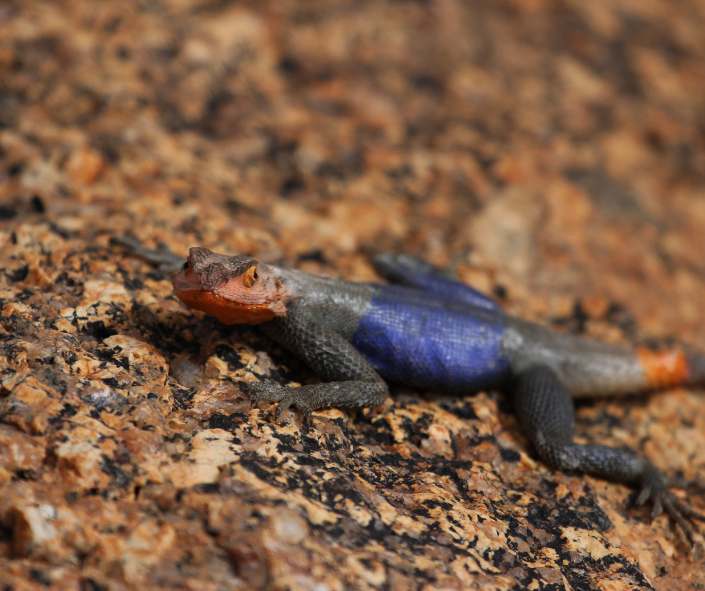
2. Bibron’s Thick-Toed Gecko (Chondrodactylus bibronii)
A chunky fellow with a slightly grumpy look, Bibron’s gecko is a tougher, more robust cousin of the house gecko. Nocturnal and often vocal, they’re native to rocky outcrops but happily adopt lodges as homes.
Habitat: Tree bark, rock crevices, walls and ceilings.
Behaviour: Loud nighttime chirper; territorial.
Strange Fact: If handled, they can produce surprisingly loud squeaks and may even bite (gently, of course).
Learn more from this lovely write-up: Bibron’s Thick-Toed Gecko at de Wets Wild

3. The Rough-scaled Plated Lizard (Gerrhosaurus major)
Sturdy, heavily armoured, and looking rather like a miniature crocodile, this impressive lizard is surprisingly docile—and often curious about its human neighbours.
Habitat: Dry woodland and grassland—especially around lodge gardens.
Behaviour: Diurnal, slow-moving, often seen basking.
Did You Know? Their thick, plate-like scales help them retain moisture in the dry Lowveld heat.
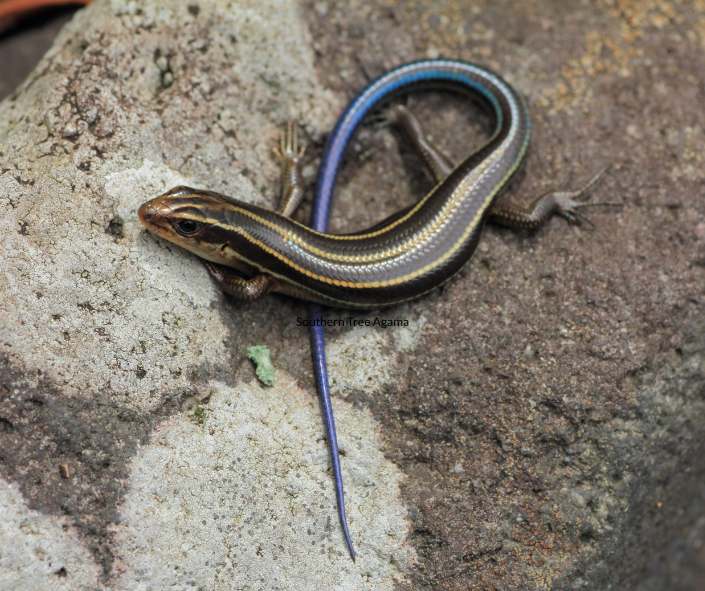
4. The Southern Tree Agama (Acanthocercus atricollis)
Often mistaken for a chameleon, this lizard is a true master of disguise. Males sport brilliant blue heads during mating season and cling vertically to trees, keeping a keen eye on the world below.
Habitat: Trees and wooden lodge structures.
Behaviour: Insectivorous, uses colour changes for communication.
Weird Fact: Their skin can reflect UV light, which birds can see—making their “invisible” displays surprisingly loud in the avian world!

5. The Tropical House Gecko (Hemidactylus mabouia)
A familiar face (or foot) on lodge walls after dark, these nocturnal lizards are your personal mosquito patrol.
Habitat: Lodge walls, ceilings, window sills—anywhere near lights!
Behaviour: Sticky-toed climbers, they’re often heard chirping softly at night.
Weird Fact: Geckos don’t blink. They lick their eyes to keep them clean!

How to Spot Lizards Like a Naturalist
Lizards are not loud. They don’t roar, trumpet, or cackle in the trees. But if you know where to look, they reveal themselves in slow blinks and lightning dashes.
Look near warmth: Lizards are cold-blooded and love basking on rocks, brickwork, and wooden steps.
Watch the trees: Especially in the early morning, you might spot a tree agama or flat lizard surveying its kingdom.
Stay still: A sudden movement can send them scurrying. Sit quietly and let the dragons come to you.
At Needles Lodge, we encourage our guests to take a gentle wander around the property in the mornings. You’ll be surprised how many reptilian residents are watching you first.
Lizards and the Lowveld Ecosystem
Though small, lizards play a mighty role in the bushveld’s intricate food web.
Pest Controllers: From flies and ants to spiders and even small scorpions, lizards help regulate insect populations.
Food for Others: Birds, snakes, and even mongooses dine on these agile reptiles, ensuring the energy of the savanna flows full circle.
Seed Dispersers: Some species nibble on fruit and help disperse seeds through their droppings.
Their presence is a sign of a healthy ecosystem—one that pulses with diversity even at the smallest scales.
Weird and Wonderful Lizard Facts
Just to delight the herpetological heart in all of us:
🦎 Some lizards can run on two legs when threatened—yes, like tiny dinosaurs.
🦎 The tokay gecko can vocalise loud enough to wake you—though it’s mostly found further north.
🦎 Many species can autotomise, or shed their tails, to escape predators. The tail twitches violently, distracting the attacker while the lizard makes its getaway.
🦎 Lizard vision is superb—they see in full colour, often better than humans. Some can even detect ultraviolet light!
Conservation Notes: Respecting the Tiny Dragons
Though often overlooked, lizards are not invincible. Their habitats are threatened by urban sprawl, pesticide use, and pollution. Encouraging native vegetation, avoiding chemical sprays, and simply observing with care can help preserve these remarkable creatures.
At Needles Lodge, we maintain our gardens with eco-conscious care, ensuring a safe space for the full spectrum of local wildlife—from elephants to ants, and everything scaly in between.
There is something deeply rewarding about discovering the small wonders of the bush. While the lion may be the king, and the elephant the great architect of the savanna, the humble lizard is the storyteller of a quieter, older world—one that still pulses beneath your feet.
So next time you visit Kruger National Park, or relax on the shaded deck at Needles Lodge, take a moment to pause. Look closer. Behind that rock or up on that branch may be a dragon no bigger than your hand, sunning itself like royalty in its own little kingdom.
And in that moment, you’ll realise—this too is safari.
📍 Plan your escape into the world of wild wonders and quiet reptiles. Book your stay at Needles Lodge and discover the magic of the bushveld, one scale at a time.
Further Reading
Nestled next to Kruger National Park, Marloth Park is a photographer's dream, teeming with wildlife like zebras and bushbabies, often visible from Needles Lodge. This serene sanctuary offers not just a stay but a chance to capture the essence of these creatures in their natural habitat. From the magical golden hours to the spontaneous wildlife behaviours at dusk, this guide provides expert tips to help you hone your photography skills and take...
This article invites nature enthusiasts to explore the fascinating world of the Nile Crocodile in Kruger National Park. It highlights the impressive size and hunting prowess of these ancient reptiles, emphasizing their role as apex predators in maintaining ecological balance and cleaning up waterways. The piece also delves into their ancient lineage, cultural significance, and intriguing biological traits, including their powerful jaws and maternal instincts. It concludes by promoting Needles Lodge as...

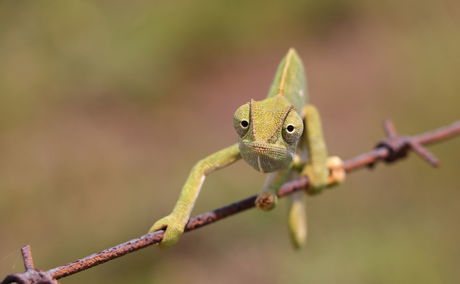
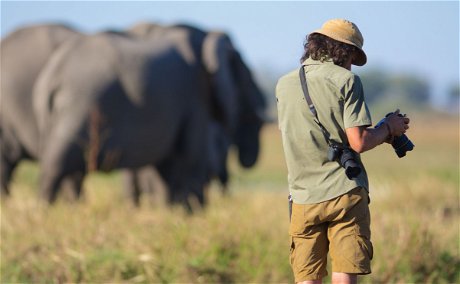


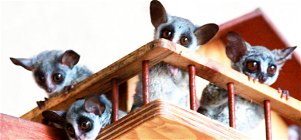
Share This Post